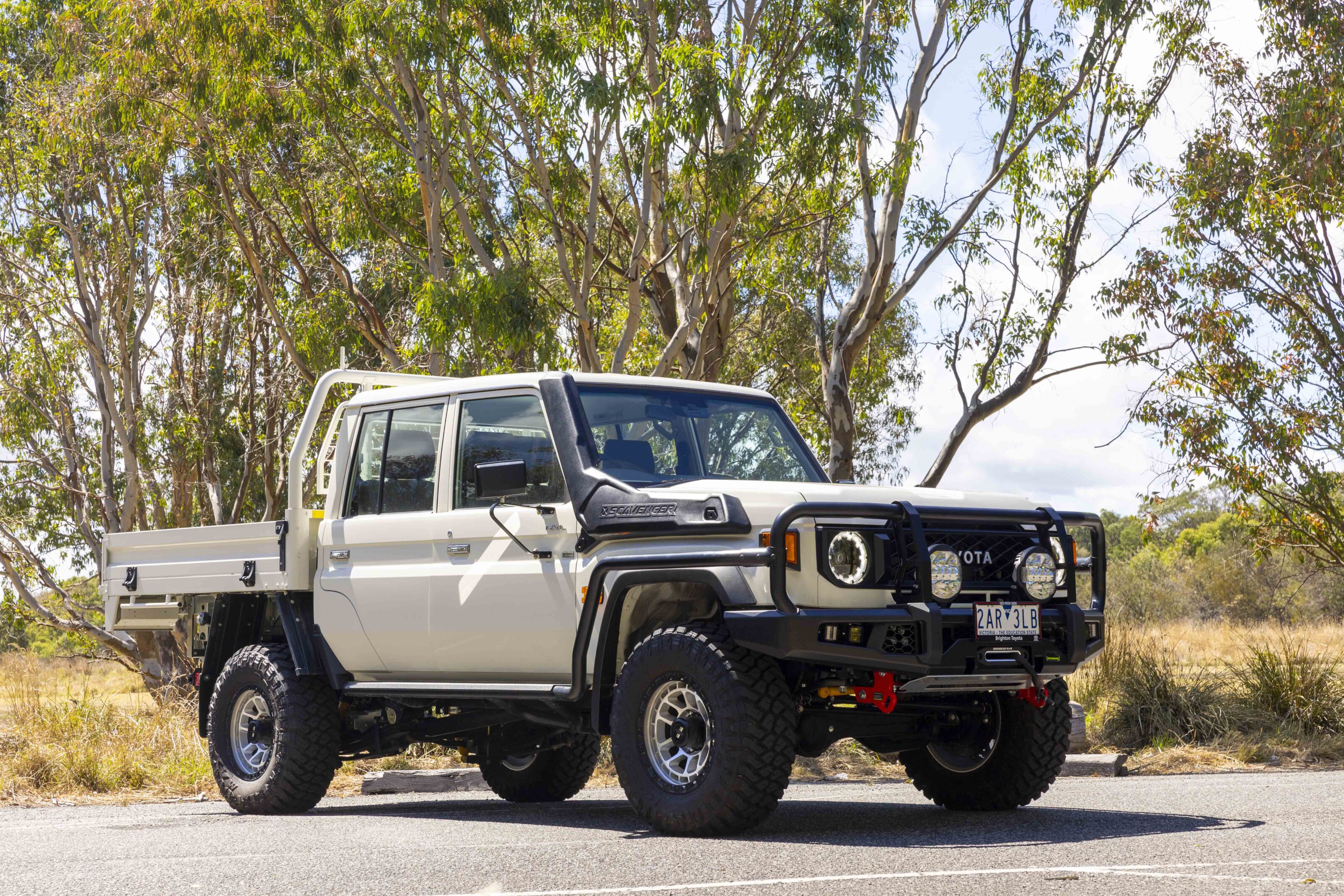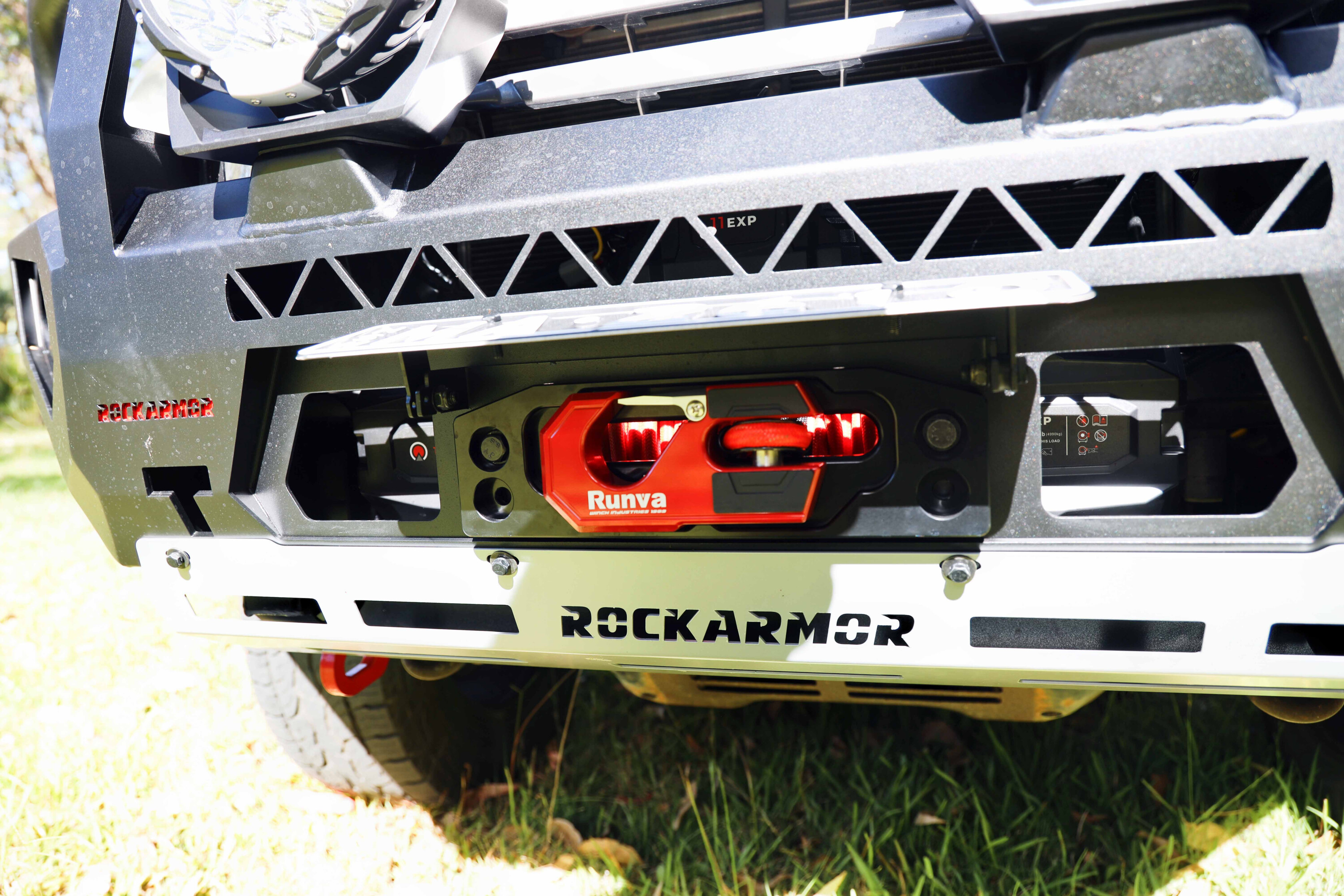With diesel costing significantly more than ULP these days, why do most four-wheel drivers prefer oil burners? And why does diesel cost more than ULP?
There are a number of reasons why the majority of us prefer diesel-engine 4X4s to petrol-powered ones, and they’re certainly not all related to the performance offered by modern turbo-diesel engines.Old-school oilers
Some 15 years ago, even when venerable off-roaders such as the Toyota LandCruiser and Nissan Patrol were offered with either powerful petrol sixes or asthmatic, naturally-aspirated, indirect-injection diesel engines, the oil-burner was still the first choice when it came to off-road touring. Four-wheel drivers would forego the performance, refinement and convenience offered by big petrol engines, and opt for dirty, smelly diesel vehicles that clattered loudly at idle, would struggle to maintain 100km/h on the highway in a headwind and were best described as slugs when it came to towing a trailer.Sure, these mechanically injected diesel engines were more fuel efficient than their gas-guzzling petrol counterparts, but fuel wasn’t nearly as expensive back then as it is now; so why did we all crave a diesel 4X4 over a petrol one?Firstly, diesel fuel used to be cheaper than more highly refined petrol at the bowser but, more significantly, a diesel vehicle’s lower fuel consumption resulted in improved touring range, which is extremely important when you’re covering vast distances. And while petrol engines would become almost exponentially thirstier the harder they were worked, such as in low-range off-road conditions or slogging through soft sand, diesel engines would plod along in such conditions without nearly as much impact on their thirst.The greater touring range offered by diesel vehicles also meant you had to carry less fuel with you in remote areas where fuel availability was limited. Fuel storage was also a consideration, as it’s much safer to carry extra diesel in jerry cans than petrol.Finally, diesel vehicles were generally considered to be more suitable for off-road driving. Unlike petrol engines, which had dizzies, plugs and leads, old-school mechanically injected compression ignition diesels had no electronics that could fail in water crossings; keep the water out of the intake with a snorkel and you were essentially waterproof.With less power than their petrol counterparts, diesel four-wheel drives were generally geared lower which, while not resulting in relaxed highway touring, was far more suitable in tricky off-road conditions. Lower gearing makes it easier to slowly climb over obstacles, easier to crawl up steep hills and safer on steep descents. The higher compression of diesel engines also added to engine braking effectiveness. Many of the reasons we preferred diesel 4X4s in the past are still valid today; they’re still more fuel efficient than petrol 4X4s, they still have a better touring range, it’s still safer to carry diesel in jerry cans than petrol and, in many cases, they’re still better suited to off-road conditions.Diesel versus ULP
Of course, the simplicity of old-school compression ignition diesel engines no longer holds true; modern diesel engines are high-tech pieces of equipment. These days, diesel engines feature extremely high injection pressures, generally metered out with super accuracy by complex ECUs, they have variable-vane turbochargers, intercoolers, piezo ignition, catalytic converters, particulate filters, and computers controlling how they mate to their six- or seven-speed auto transmissions. Drop one of these babies too far into the drink and it’s game over until you can truck it to your nearest dealer with the diagnostic gear to fix it.The biggest advantage of modern high-tech diesel 4X4s is that they now offer equivalent – or even better – performance to petrol-engine 4X4s. With masses of torque available at low engine speeds, and comparable power output further up the rev range, modern oil burners can match it on the road with petrol 4X4s, while using significantly less fuel. This abundance of low-rpm torque is still well suited to off-road driving and modern diesels are much more refined than they used to be; they don’t clatter loudly at idle and no longer bellow plumes of black smoke out of their tailpipes.The cost equation
A couple of years ago, the price of diesel at the bowser in Australia was up to 30 cents per litre more than ULP. With rising fuel prices in 2011 for a variety of reasons, diesel is once again more expensive than petrol (currently around 10 cents in most major capital cities), so are there still cost advantages to driving a diesel 4X4?In the September 2008 issue of 4X4 Australia, we examined the petrol versus diesel debate closely. Using petrol and diesel versions of the Toyota 200 Series LandCruiser, the Prado and the Nissan Navara (petrol variant now discontinued, but we retained it here for comparison purposes), we looked at overall ownership costs over three years to see if you were financially better off buying a petrol or diesel 4X4.The results were surprising. Taking into account initial purchase price, the cost of finance, servicing costs, resale value, fuel consumption and fuel price at the time, if you travelled 30,000km a year you would have been $4200 a year better off buying a petrol LandCruiser as opposed to a diesel one. In the case of the Navara you would have been $327 a year better off with the petrol variant. This is despite the petrol vehicles using much more fuel than their diesel counterparts. But in the case of the Prado, you would have been $1400 a year better off with the diesel model.While the 2008 story made various assumptions on the cost of ownership, it also looked at the relative advantages of petrol and diesel engines for each of the vehicles. In the case of the Navara and, to a lesser degree, the Prado, the petrol-engine variants at the time were far more pleasant to drive than their diesel counterparts, with better power output and far more refined characteristics. But in the case of the twin-turbo V8 LandCruiser, the oiler won hands-down thanks to its masses of torque, decent power output and better touring range.In the three years since that story was published, however, diesel technology has continued to improve at a rapid rate. There is a new 3.0-litre TDV6 Navara, for example, that pumps out a claimed 170kW of power and 550Nm of torque, mated to a seven-speed automatic transmission, giving it the ammo to outgun its petrol-engine sibling.Why is diesel expensive?Crude oil prices have been increasing steadily as the world’s economies escape the grip of the GFC, but that doesn’t explain why diesel costs more than petrol, as both fuels are extracted from the same crude oil product via a refining process.The cost of diesel in Australia is influenced by a number of factors, but basically it’s a simple case of supply and demand. Diesel fuel in Australia is based on the Singapore market, as this is where we export and import most of our diesel to and from. Diesel powers industry, and demand for diesel fuel in the Asia-Pacific region is high at the moment due to the local mining boom and massive industrial growth in China, India and elsewhere. But supply of diesel is currently limited as there is no excess refining capacity in the region. High demand and limited supply means high prices.Oh, and the argument that diesel requires less refining than petrol is no longer valid. Diesel fuel in Australia is of a very high quality and Australian standards dictate that diesel contains less than 50 parts per million of sulphur content. The low sulphur content has been mandated because it helps to minimise harmful emissions, and other requirements govern the quality of diesel fuel in Australia to minimise the production of black smoke and particulates. The extra refining to remove the sulphur from crude oil means that it costs just as much to refine diesel as it does ULP. But supply and demand, along with the complex refining process, doesn’t explain why diesel prices stay high while ULP is discounted on a regular basis by the fuel retailers.According to the Australian Institute of Petroleum (AIP): “Only around 25 percent of the diesel used in Australia is sold through retail outlets, and much of that is sold to account customers. Most diesel is sold in bulk to commercial and/or industrial customers on long-term contract.“In the Australian market, there is very little diesel sold to private customers. Hence retail prices – unlike petrol prices – are not subject to aggressive discounting.”As an industry body, the AIP might not be the most independent source of information, but if you’d like to learn more about the factors that influence fuel pricing in Australia, its website has a wealth of information (aip.com.au). Most of the fuel companies that have retail outlets in Australia also have some good information on their websites in regards to fuel pricing.So where to next?As the world economy crawls its way out the GFC, demand for diesel and ULP will continue to rise, meaning higher fuel prices. But we can take some comfort in the fact that both petrol and diesel engine technology is moving along at a rapid pace, resulting in better fuel economy, and significant gains in performance, refinement and reliability.





